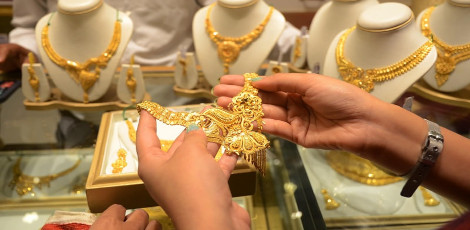Is Gold Price the Same Across India? Heres Why It Varies by Region

Gold prices in India vary significantly across states and cities, driven by several factors. From transportation costs to local demand, these elements collectively determine the final price consumers pay. Let’s take a closer look at the main reasons behind these variations.
1. Transportation Costs: Adding to the Price Tag
India, one of the largest importers of gold, primarily brings in the precious metal via air transport. The logistics of moving gold from ports to various regions add significantly to the cost. These transportation expenses include fuel, vehicle maintenance, and personnel costs, but the need for high security further increases the price. Cities or regions that require more extensive transportation services typically see higher gold prices.
2. Demand Drives Discounts: Quantity of Gold Purchased
The demand for gold plays a crucial role in determining its price. Southern India, particularly Kerala, accounts for a substantial portion of India’s gold consumption, leading to bulk purchases by retailers. In high-demand cities like Chennai, Mumbai, Delhi, and Kolkata, jewellers can buy gold in large quantities at discounted rates, enabling them to offer competitive prices to consumers. Conversely, prices may be higher in tier 2 cities due to lower demand and smaller purchase volumes.
3. Local Jewellery Associations: Influencing Local Rates
Jewellery and bullion associations within each state or city often play a pivotal role in setting regional gold prices. For instance, in Tamil Nadu, the Jewellers and Diamond Traders` Association, Madras helps establish local rates. Similar associations across India ensure that local market dynamics, such as demand and supply, are considered when determining daily gold prices.
4. Purchase Price of Gold: The Biggest Factor
The purchase price of gold, impacted by international rates and local taxes, is a primary factor influencing gold prices. Jewellers who have acquired gold at lower costs can offer it to customers at reduced rates. However, official gold imports in India attract a 10% import duty and an additional 3% tax. In contrast, smuggled gold, though illegal, bypasses these duties, allowing sellers to offer lower prices. It`s important to note that buying gold without a proper bill promotes smuggling, which is a criminal offense.
5. Macroeconomic Factors: A Broader Impact
Gold prices are heavily influenced by macroeconomic conditions, including supply and demand. During times of economic uncertainty, gold becomes a popular investment due to its status as a safe asset, driving up prices. Other factors, such as inflation, interest rates, and even the monsoon season, can affect gold demand. For instance, during periods of rising inflation, gold becomes more attractive than cash, increasing its demand and price.
Key Takeaways
Gold prices in India are determined by a mix of macroeconomic trends and local factors. While economic uncertainty drives demand for gold on a national scale, factors such as transportation costs, local demand, and regional jewellery associations influence the price at a ststate or city level. Gold prices can differ significantly between regions, and no single state consistently offers the cheapest gold rates.







